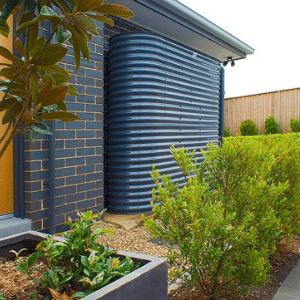Top Notch Slimline Water Tanks: Effective and Space-Efficient Solutions
Top Notch Slimline Water Tanks: Effective and Space-Efficient Solutions
Blog Article
Checking Out the Numerous Uses Rain Tanks for Residential and Commercial Residences
As the global focus on lasting living practices continues to escalate, the usage of rain containers in both residential and industrial setups has become a pertinent option. These containers offer a reservoir for rain harvesting, offering a myriad of possible applications that extend far beyond simple storage space. From irrigation to bathroom flushing and landscape design, the convenience of rainwater tanks is large. Their integration right into industrial properties opens up a world of possibilities for environmentally conscious companies. The diverse uses rainwater tanks present a compelling case for their adoption, not only as a practical water-saving measure but additionally as a testimony to liable source administration.
Benefits of Using Rain Storage Tanks
Utilizing rain storage tanks offers many advantages for both houses and neighborhoods in terms of water preservation and sustainability. One of the vital benefits of using rain tanks is the substantial reduction in dependence on mains water - Slimline water tanks. By catching and saving rainwater for later usage, individuals and areas can decrease their need for treated water, inevitably relieving the worry on water treatment centers and decreasing power consumption related to water transportation and treatment
In addition, rainwater collecting through storage tanks provides a reliable different water source throughout times of water constraints or lacks. This saved rainwater can be used for numerous non-potable purposes such as irrigation, purging toilets, and washing clothing, lowering the strain on standard water resources. Additionally, utilizing rain containers can lead to cost savings for both families and areas by lowering water expenses and reducing the demand for costly facilities growths to fulfill expanding water demands.
In essence, the usage of rain containers provides a lasting and environmentally friendly strategy to water administration, benefiting both specific customers and the broader neighborhood in regards to water preservation, cost-efficiency, and durability.
Rain Container Use in Watering
Provided the advantages of rainwater storage tanks in conserving water sources and decreasing reliance on mains water supply, a considerable application hinges on making use of stored rainwater for watering functions - Slimline water tanks. Rainwater harvesting systems can effectively gather and save rain, offering a lasting water resource for watering yards, lawns, and farming fields. By utilizing rainwater for watering, residential property owners can decrease their dependence on treated water sources, leading to set you back savings and ecological benefits

Among the key benefits of utilizing rain for irrigation is its purity. Rain is naturally soft and without the chemicals and additives often discovered in mains water, making it suitable for beneficial plants without the risk of damaging results. Furthermore, rain is at ambient temperature, which can profit plant growth by staying clear of temperature level shocks that can happen with cold mains water.
Rainwater Containers for Toilet Flushing

Applying rainwater tanks for bathroom flushing is a cost-efficient and eco-friendly practice that can be easily integrated into both residential and business buildings. The saved rainwater can be utilized to flush toilets by connecting the container to the existing pipes system. This straightforward yet reliable service can considerably decrease water intake in a building, particularly in areas where water scarcity is a concern.

Incorporating Rainwater Tanks in Landscape Design
An effective technique for boosting sustainability content in landscape design includes incorporating rainwater storage tanks to enhance water usage and promote environment-friendly practices - Slimline water tanks. Integrating rainwater containers in landscaping supplies various advantages for both residential and commercial properties. These storage tanks can capture and keep rain overflow from roofings, which can then be made use of for sprinkling yards, grass, and plants. By utilizing rain for irrigation purposes, homeowner can lower their reliance on metropolitan water sources, leading to cost savings and preservation of priceless water sources.
In addition to offering a sustainable water source for landscaping requirements, rain tanks can also assist in managing stormwater overflow. By catching rain that would otherwise move right into tornado drains pipes, these storage tanks can mitigate disintegration, decrease flooding risks, and avoid contamination of all-natural water bodies. Integrating rain tanks in landscape design can add to the total aesthetic allure of the residential or commercial property, showcasing a dedication to environmental stewardship.
Commercial Applications of Rainwater Tanks
Using rainwater storage tanks in business setups supplies a lasting service for water administration and preservation, profiting businesses Discover More and the atmosphere alike. One key commercial use is for watering purposes, where collected rain can be made use of to water landscape design, gardens, and agricultural areas bordering industrial homes.
Additionally, rainwater gathered in tanks can be dealt with and made use of for non-potable functions within commercial residential properties, such as flushing toilets, cleansing, and cooling down systems. Overall, the unification of rainwater containers in commercial setups presents a sensible and environmentally accountable approach to water management.
Verdict
Finally, rainwater containers use numerous benefits for both residential and commercial properties. From irrigation to toilet flushing and landscaping, the use of rainwater tanks can help save water resources and minimize water bills. Additionally, including rain containers in commercial setups can bring about substantial price savings and environmental benefits. Overall, the adaptability and sustainability of rain storage tanks make them a useful financial investment for any type Web Site of building owner aiming to boost water performance.
Report this page